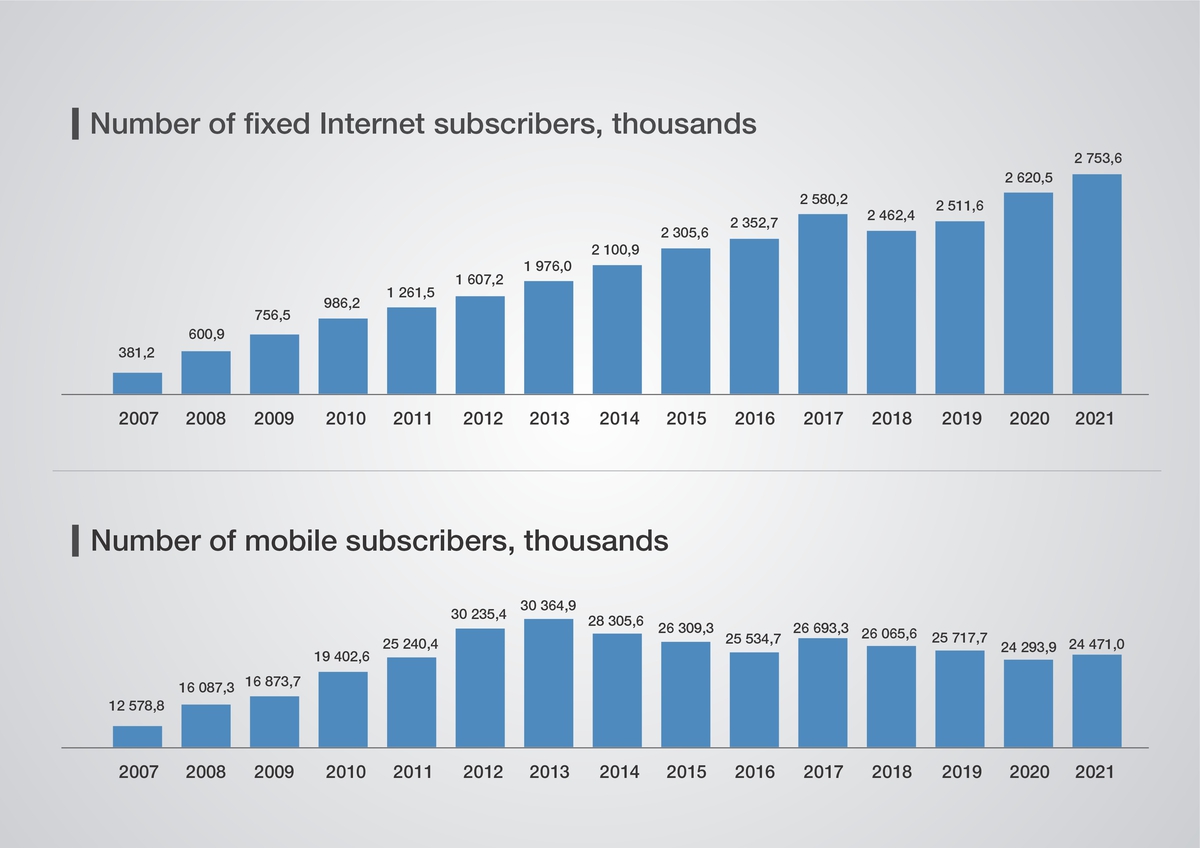NUR-SULTAN – Kazakhstan has set the ambitious goal to ensure 100 percent coverage of the country with high-quality internet and 95 percent with home broadband access networks by 2025. Measures necessary to achieve these targets and other challenges in the development of broadband internet access were the focus of an international forum titled Towards a Digital Kazakhstan hosted by the Kazakh capital on Aug. 5.

In July, President Kassym-Jomart Tokayev signed the decree that strengthens consumer protection in the field of communications and introduces and tightens liability for a significant discrepancy between the actual parameters of Internet communications and those declared by the operators.
The forum sought to foster a dialogue between the government and businesses on the nation’s plan to develop broadband internet access.
Addressing the forum, Deputy Minister of Digital Development, Innovation and Aerospace Industry Askhat Orazbek said that access to the internet is an inalienable human right.
“Our goal is to eliminate the digital divide in the country,” said Orazbek. “Our industry is at the forefront of Kazakhstan’s digital transformation, and we should be fully aware of the need for an accelerated digital restructuring, creating new digital business models in all sectors. But solving global tasks of the digital economy is possible only in close cooperation of three parties: regulators, telecom operators and end consumers of communication services.”
The 100 percent coverage with high-quality Internet and 95 percent with home broadband access networks are targets envisioned in the national project that the country approved in 2021 – Technological Breakthrough Through Digitalization, Science and Innovation.
Orazbek said that the ministry and telecom operators have done a good job providing rural areas with communication as part of the 250+ program. Launched in 2020, the program’s key objective was to provide villages with a population of over 250 people with the internet.

According to the ministry, there are 6,459 such settlements in the country, including 118 cities and 5,214 rural settlements, provided with broadband internet access services using ADSL technologies, FttN, 3G and 4G technologies.
By the end of 2020, mobile broadband access services covered 5,332 settlements or 99.3 percent of the country’s population.
“The next step is to improve quality and expand coverage zones through alternative tools – communication satellites. A lot of work has been done at the legislation level – the possibility for operators to lay networks using telecommunication poles that will significantly speed up internet provision in remote areas, as well as tax relief – operators will direct funds not to pay taxes but to develop a network,” said Orazbek.
The quality of broadband internet has been improved in 645 villages and in another 123 villages by the end of 2022. As of today, some 1,673 villages, home to approximately 266,400 people, still remain out of mobile broadband access coverage.
To provide small remote and hard-to-reach villages with internet and communications, the ministry is considering using foreign satellite communications systems, including OneWeb O3b and Starlink. This year, work is being carried out to legalize non-geostationary satellite orbit systems through amendments to the Tax Code of Kazakhstan to make it possible for these systems to enter the market of Kazakhstan. The amendments are meant to reduce the rates for the use of radio frequency spectrum for operators and make it possible to operate this system.
The forum also featured a presentation of research on the development of broadband access networks in Kazakhstan conducted by the International Data Corporation. The 90-page paper provides a grasp of global broadband access network development and analyzes the situation in Kazakhstan.
The recommendations of experts cover three major areas – the quality of internet access, the level of competition in the broadband market and the quality of the regulatory environment.
Experts advise strengthening the concept of shared infrastructure, revising the system of subsidizing universal services, and developing competition in the market of both fixed and mobile broadband access through partial or complete privatization of the national operator.
According to Natalia Mochu, regional director for the Commonwealth of Independent States of the International Telecommunication Union (ITU), to achieve universal connectivity by 2030, the ICT industry has to solve three main tasks – to eliminate the coverage gap, the usage gap and to ensure full connectivity.
“The CIS region is showing strong growth in coverage and quality of connectivity, but the urban-rural digital divide still persists, with the gender digital divide remaining at minimal levels. The number of internet users among older people is gradually increasing,” said Mochu.
A review of ITU data for Kazakhstan shows significant progress in the development of the market. But further investments in infrastructure development, as well as improvement of regulatory policy and additional measures to develop digital skills among the general population are necessary.

